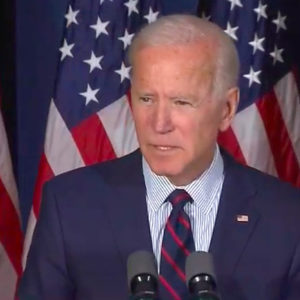Though avowed socialist Bernie Sanders is no longer running in the presidential election, America’s patients and healthcare system still face a very real threat from socialized medicine.
In fact, a Joe Biden presidency may even increase the prospect of full-scale socialized healthcare, as Bernie’s radical Medicare for All plan, which would have immediately eliminated the private insurance that millions of Americans reply on, is repackaged as a more politically palatable “public option.”
Biden’s public option would simply lead us down a slower path to the same result: full-scale, government-run socialized medicine. Their names aside, the only real difference is when they would do so.
The political left and its new standard bearer cleverly frame their radical proposal as merely an “option” that expands choice.
But their plan draws from the same, tired socialist playbook: market-distorting price controls that crowd out the private sector, lead to more government control, crush innovation and cause access restrictions for patients.
Unfortunately, some ideologues on the left see the current COVID-19 crisis and the resultant rise in unemployment due to temporary, government-imposed mandates as an opening to sell an anxious public on these failed socialist models.
But the reality is that plans like the public option would decrease the quality and increase the cost of care — and inhibit the very cutting-edge innovation that will ultimately deliver us from this crisis.
The plan begins by offering a government-run healthcare option using socialist-style price controls to set artificial prices well below market rates and true cost — ultimately, of course, leaving taxpayers on the hook to underwrite the difference.
The government plan’s artificially low prices would then slowly strangle its competitors in the private insurance market, ultimately crowding it out altogether and thus achieving the left’s long-term objective of full-scale, government-controlled socialized healthcare.
As with other socialist schemes, government price setting in healthcare would come with serious consequences — it’s only “cheap” because someone else is paying the price. Vast new government expenditures would come out of the pockets of hard-working taxpayers.
One study found that the public option plan would add more than $700 billion to the deficit over 10 years — a number that would increase to an additional $100 billion in annual deficits within a few years.
There’s also a human cost that is immeasurable.
The artificially low rates at which a public option would pay doctors and hospitals would inevitably lead to reductions in care and reduced investment by healthcare providers. When doctors and hospitals are paid at Medicare or Medicaid rates, for example, patient access decreases and quality of care is lowered.
Under the public option, eventually American patients would face the same dangerous healthcare conditions that countries with government-run healthcare systems deal with, including the shortages of medical supplies and long wait times for hospital beds and critical treatments that we see in many such countries.
Equally as alarming, there is a well-established inverse relationship between innovation and price controls of the kind a public option would impose: where price controls are implemented, innovation flees.
In recent decades, much of that innovation fled from countries with socialized healthcare to the United States precisely because of our market-based heath care system that encourages and rewards innovation.
To develop a new drug is incredibly risky, time-consuming and costly; from conception to market typically costs about $2.6 billion and often 10 years or more.
Price controls would destroy the viability of the tremendous investments of time and resources required to discover new cures and bring them to market, ultimately denying patients the breakthrough cures of tomorrow.
If the startling consequences of the so-called public option sound familiar, it’s because they are largely the same alarms that many were sounding about Sanders’ Medicare for All plan.
In reality, the “public option” vs. Medicare-for-All debate is a political sleight of hand. The names are a distinction without a difference; both plans take us to socialized medicine by different means.
So while Sanders may be out of the race and his Medicare for All dream more distant, the threat of socialized healthcare remains and the fight goes on, because if we let a public option come to pass, it will quickly look like less of an “option” and more like an offer we can’t refuse.

